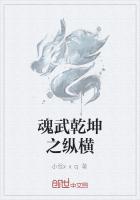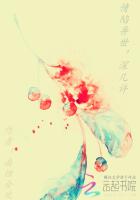Branded a sinner, through its loss of leaves and honest green coloring matter (chlorophyll), the pine sap stands among the disreputable 'gang' of thieves that includes its next of kin the Indian-pipe, the broom-rape, dodder, coral-root, and beech-drops (q.v.).Degenerates like these, although members of highly respectable, industrious, virtuous families, would appear to be as low in the vegetable kingdom as any fungus, were it not for the flowers they still bear.Petty larceny, no greater than the foxglove's at first, then greater and greater thefts, finally lead to ruin, until the pine-sap parasite either sucks its food from the roots of the trees under which it takes up its abode, or absorbs, like a ghoulish saprophyte, the products of vegetable decay.A plant that does not manufacture its own dinner has no need of chlorophyll and leaves, for assimilation of crude food can take place only in those cells which contain the vital green.
This substance, universally found in plants that grub in the soil and literally sweat for their daily bread, acts also as a moderator of respiration by its absorptive influence on light, and hence allows the elimination of carbon dioxide to go on in the cells which contain it.Fungi and these degenerates which lack chlorophyll usually grow in dark, shady woods.
Within each little fragrant pine-sap blossom a fringe of hairs, radiating from the style, forms a stockade against short-tongued insects that fain would pilfer from the bees.As the plant grows old, whatever charm it had in youth disappears, when an unwholesome mold overspreads its features.
第一章SCARLET PIMPERNEL; POOR MAN'S or SHEPHERD'S WEATHER-GLASS; REDCHICKWEED; BURNET ROSE; SHEPHERD'S CLOCK
(Anagallis arvensis) Primrose family Flower - Variable, scarlet, deep salmon, copper red, flesh colored, or rarely white; usually darker in the center; about 1/4in.across; wheel-shaped; 5-parted; solitary, on thread-like peduncles from the leaf-axils.Stem: Delicate; 4-sided, 4 to 12in.long, much branched, the sprays weak and long.Leaves: Oval, opposite, sessile, black dotted beneath.
Preferred Habitat - Waste places, dry fields and roadsides, sandy soil.
Flowering Season - May-August.
Distribution - Newfoundland to Florida, westward to Minnesota and Mexico.
Tiny pimpernel flowers of a reddish copper or terra cotta color have only to be seen to be named, for no other blossoms on our continent are of the same peculiar shade.Thrifty patches of the delicate little annuals have spread themselves around the civilized globe; dying down every autumn, and depending on seeds alone to keep the foothold once gained here, in Mexico and South America, Europe, Egypt, Abyssinia, Cape of Good Hope, Mauritius, New Holland, Nepal, Persia, and China.What amazing travelers plants are! The blue-flowered plants are now believed to be a distinct species (A.coerulea).
Notwithstanding the fact that many birds delight to feast on the seeds, or perhaps because of it, for many must be dropped undigested, the scarlet pimpernel is one of the most widely distributed species known.
Before a storm, when the sun goes under a cloud, or on a dull day, each little weather prophet closes.A score of pretty folk names given it in every land it adopts testifies to its sensitiveness as a barometer.Under bright skies the flower may be said to open out flat at about nine in the morning and to begin to close at three in the afternoon.No nectar is secreted unless there may be some in the colored hairs which clothe the filaments.As if it knew perfectly well that however.desirable insect visitors are - and it has an excellent device for compelling them to transfer pollen - it is likewise independent of them, it takes no risk in exposing the precious vitalizing dust to wind and rain, but closes up tight, thereby bringing its pollen-laden stamens in contact with its stigma.Manifestly, it is better for a plant having aspirations to colonize the globe to set even self-fertilized seed than none at all.














